How To Make Sea Salt
Oct 22, 2011, Updated Jun 18, 2014
Linda Miller Nicholson writes the aptly-named blog Salty Seattle, and is known as much for her sassy stilettos as her sous-vide. She’s a conscious omnivore, food-sorceress, and slow-food salt-maker. She lives in Seattle, Washington, with her husband Jonas and their toddler Bentley Danger. (Yes, that’s really his name). You can catch up with her, or at least try to, on Twitter.
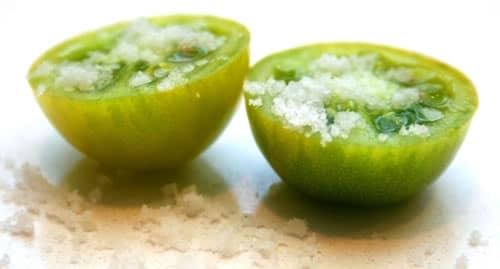
To know Andrew is to love him, there is no way around that fact. Consequently, when he asks you to do something, the only acceptable response is an enthusiastic YES! I have a fair amount of experience in making salt, so Andrew thought it would be a great thing to share with the many participants in the #unprocessed challenge.
Andrew’s totally going to make all of us into one big, happy Little House on the Prairie family by the end of the month, so we might as well embrace it. After you tackle salt, be sure to ditch your baking soda leavening agent in favor of ground deer antler, ok? But for now, something simple. Elemental. Salt.
Back in the days when my husband and I were blissful DINK’s (double income no kids), I’d collect shoes from every place we traveled. Whether we were in Tijuana, Mauritius, or the far-reaches of Eastern Romania, I’d shove my feet in the nearest goat hair confection — the weirder the better.
Fast-forward to my present life of polyandry: I’m married to my husband and a height-of-the-market mortgage, and I make do on the diminutive salary of a freelance writer. And then there’s my toddler, Bentley Danger, who has a shoe habit that rivals mommy’s because his feet grow like bamboo on steroids. Sadly, stiletto-hoarding no longer pencils out.
During those well-shod travels, I saw a lot of seas. In every port, I found a different salt on the shelves of the local grocer. In Hawaii there is the eponymous red alaea- course ground and tasting of clay. In Sicily there is sea salt collected in pans from corraline Trapani.
Soon, I had amassed a stockpile of more than 30 salts from around the world; the only rule was I had to have visited the source. Then the salt-craze hit the US and stores cropped up like The Meadow in Portland, OR, which sells hundreds of far-flung salts. Selecting salt at the market has never been more difficult. During my last excursion to Whole Foods I counted 15+. While the choice may be hard, a little bit of finishing salt goes a long way, and different salts complement different foods. Don’t believe me? Host a salt-tasting soiree and see for yourself.
When my global collection became less precious because I could find the same stuff around the corner, I began harvesting small amounts of seawater during our travels. If we rented a condo, I’d use a combination of sunshine and stovetop evaporation to make salt from the nearest shore. I learned that salt from Puerta Vallarta tastes like jet ski fuel, whereas salt from Victoria, BC is delicate, like the lips of a mermaid.
Soon, I had a major case of the self-harvesting bug. Through a combination of trial-and-error and studying pollution patterns, I discovered my personal collection spot not far from Seattle in the vicinity of Deception Pass, Washington. One of the challenges associated with self-harvesting salt is that you need a lot of water in order to make just a few cups. The rule of thumb is about five gallons of seawater yields four cups of salt, but elements such as salinity of the water upon collection — has it rained recently? — can skew the ratio.
Always gather from an area that is clean, legal, and safe. High winds, blustery rain storms, and electric fences on naval bases are all red flags I’ve ignored. Learn from my mistakes! Calm, rain-free days on desolate shores make for easy seawater-gathering. Rain is not only uncomfortable, but it dilutes the water, amounting to less salt.
I gather water with medium-sized, rectangular, lidded coolers. Round drink coolers are buoyant and difficult to shove down in the surf, and 5-gallon water jugs don’t have a big enough opening to gather seawater effectively. To avoid silt, it’s a good idea to walk out into the surf as far as your constitution will allow. Better yet, collect by boat.
After you’ve schlepped your water home, rack it, just like wine, for a few days. That means leave the cooler untouched in a cool place, so that all the sediment and salt particles sink to the bottom. Next, siphon the clean water into a large cauldron. I use a canning pot. Do not siphon the bottom inch or so, as that contains impure sediment. Place the cauldron over low heat on the stovetop. Ideally the water should never go over 170°F, and whatever you do, DON’T BOIL IT — that will ruin the crystal structure.
If you’re processing five-gallon batches, it may take a day or two to evaporate, but keep an eye on it. Once the water level drops to a few inches, crystals will start to form. At this point, I like to remove the pot from heat and carefully (so as not to compromise the crystal structure) pour the water into a wide, shallow pan. If it’s sunny enough, I will do the final evaporation in my light-filled window box. If it’s midwinter, I give up on the notion of sun-dried salt and evaporate it in the oven, stirring gently every once in a while, with the oven at the lowest setting. This method produces better crystals because it provides more even evaporation than the stovetop. I resist over-evaporation because it weakens the flavor. Instead, I let the last of the water drip out of the salt by placing it in a tamis (ideally) or shallow sieve for a few days.
Salt-making is an addictive adventure, but the reward is great. I always make more than I think I’ll need because news of a fresh harvest travels fast. Head seaward and gather some water before it’s so cold you freeze your thighs off. You won’t regret it.
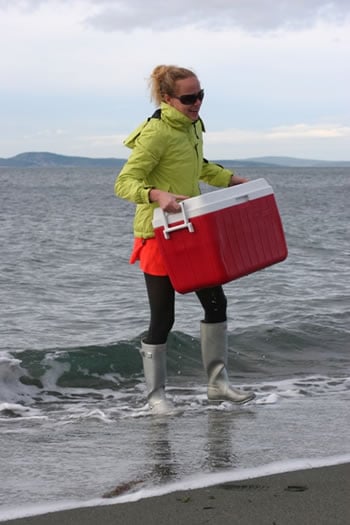

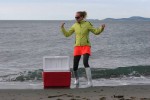

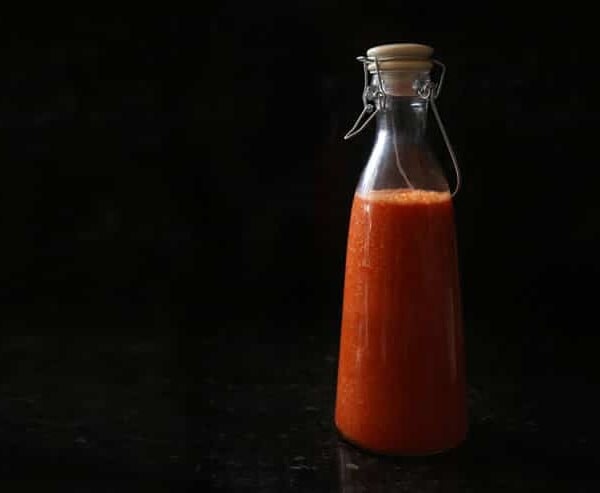

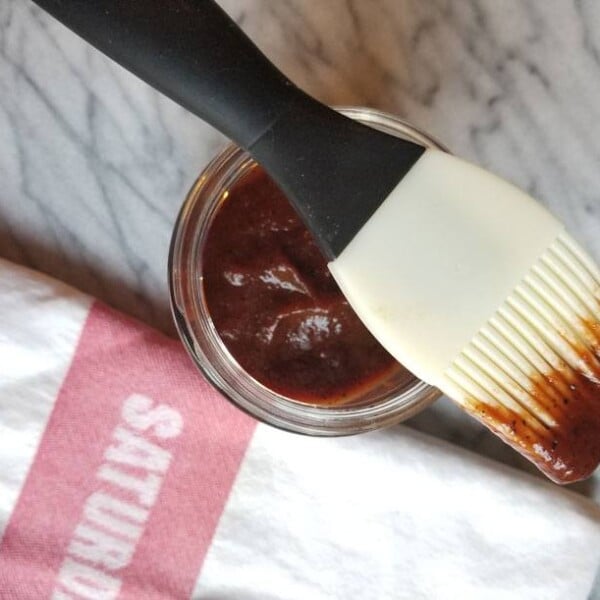
















This is a TERRIFIC idea that us DIY’ers will have to try. I have access to SC, GA and both Florida coasts several times a year and wondered if you have comments on any locations. (post Gulf oil spill?Eww!) Also, how long does one keep the “cauldron over low heat on the stovetop”? You said it may take a few days to evaporate, so is this all being done on the stovetop? (Boiling always changes SOMETHING from my chemistry perspective.)Thanks and Bright Blessiings!
@Phillip: ROFL!Hi-Octane Saline or Course Kosher Carcinogens?!
This sounds like fun!
This is really cool. I’m pretty sure I won’t be happy until I’ve managed to harvest my own sea salt. When I do, I hope it tastes like jet ski fuel. I’ll package it and sell it as “high octane.”
Dave- but have you ever tried it? I don’t speak from the perspective of a scientist, only someone who has done it both ways (50+ times) & personally seen the difference. Boiling = mushier, mealy grains, evaporating = Maldon-esque pyramids. Also not certain what you mean by “steal structure”??
Very impressive!
So cool! I love this.
Wow.
Boiling it prior to crystallization will have no effect on the steal structure. I have a phd in chemistry, but you can probably convince yourself with a high school or freshman chem text. That 170 temperature is also without substance.
In that case is there a scientific way to get the fattest best crystals? Does it have to do with how much you stir it? Also what is the steal structure?
I just made my first batch of sea salt. I live on an island in Maine 12 miles out at sea. I’m a plumber not a scientist ( kinda wish i was though). I made a container out old plywood and 1×6’s, lined with heavy duty black trash bags. Got 10 gallons of sea water by lowering a bucket off a bridge on the incoming tide. Filled the container with the ten gallons. Let it sit in our hoop house for three and a half weeks along with all our tomatoes, peppers, basil. I got some real nice large flaked sea salt to share with my family and friends. I can’t explain why it feels so good to have made my own sea salt but it does!
That’s awesome, Jim!!
I love this!!
I have never heard of anyone harvesting and making their own salt. So inventive!
Gandhi did it as a protest against a silly British law that forbade salt production in India. (sorry, I geeked out!)